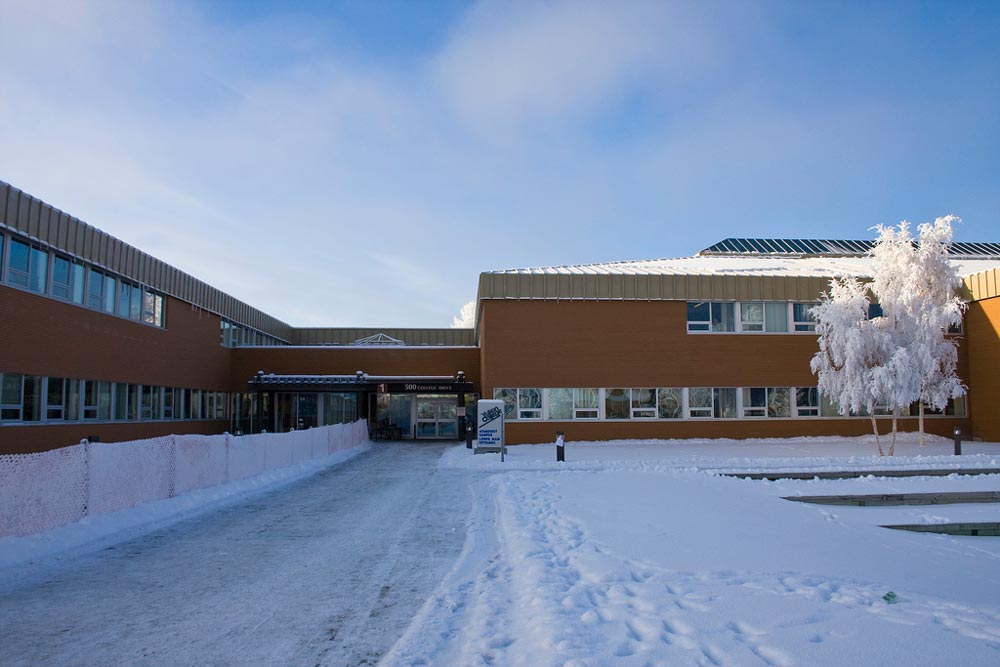Arshy Mann — CUP Western Bureau Chief
VANCOUVER (CUP) — This year has brought two important pieces of news for the University of the Arctic (UArctic).
First, the network of universities, colleges and other institutions from around the circumpolar world aimed at furthering teaching in the Arctic region celebrates a decade of existence in 2011.
Second, UArctic recently had its funding slashed by three quarters by the federal government.
More than 30 Canadian institutions across the country are members of UArctic including Yukon College, the University of Northern British Columbia (UNBC), Vancouver Island University and the University of Saskatchewan. About half of all UArctic students are Canadian.
The cuts — which will see funding drop from $700,000 last year to $150,000 — mean that UArctic will have to scale back initiatives such as its circumpolar studies program and north2north, which provides exchanges between member institutions.
“The recent decision by the Government of Canada to dramatically cut funding to the University of the Arctic will have a impact on not only the ability of Canadian students to participate in UArctic programs, but also thousands of other students around the circumpolar world who benefited from them,” said UArctic President Lars Kullerud in a press release.
It will also see the end of a Canadian university being in charge of the undergraduate office, which has been based out of the University of Saskatchewan. The office will now move to the Northeastern Federal University in Yakutsk, Russia.
Funding woes
UArctic has never had a stable source of funding within Canada. The organization has had to approach the federal Department of Human Resources and Skills Development every year for financial support.
The territories have contributed little to the program directly, choosing instead to focus on developing their own brick-and-mortar institutions such as Yukon College and Aurora College.
According to Amanda Graham, a UArctic instructor based out of Yukon College, much of the debate around funding UArctic comes down to a question of what role the federal government should have in funding higher education in the North.
“The federal government had been giving us money to do University of the Arctic stuff under the guise of it being for enhancing capacity and improving circumpolar connections … but we’re skirting fairly close to federal governments funding education,” she said.
Also, over the past few years, the push for a university north of the 60th parallel in Canada has increased, with the last two governors general arguing that one is necessary.
Kullerud, however, argued that UArctic is compatible with a potential northern university in Canada.
“Canada should pursue a physical university north of 60° — as [one] exists in every other circumpolar country. The experience in other Arctic countries has shown that the best way for northern universities to demonstrate their value and deliver quality and relevant education is through cooperation in the University of the Arctic network,” he wrote.
“That some in Canada see these options as mutually exclusive has had the unfortunate effect of disrupting agreement between the territorial and federal governments that was the key to ongoing financial support for UArctic in Canada.”
A circumpolar university
UArctic was founded in 2001 as a way of promoting higher education and research for northerners across the circumpolar world.
Its primary program is the bachelor of circumpolar studies program, which teaches a core curriculum of courses that cover northern geography, environment, history, culture and contemporary issues.
Each institution is provided the same curriculum for the seven core courses — one introductory and six upper-level — and much of the instruction is done online.
This means that students in Russia or Norway could take courses being taught out of Canada — or vice-versa.
“When I teach my UArctic course, I have students from all across Canada usually, from Russia and at times even from Europe. So it’s a good learning environment for students,” said Gary Wilson, a UArctic instructor at UNBC.
“It’s better than just sort of showing up in a classroom and meeting a whole bunch of other UNBC students, you’re actually meeting students from all around the world.”
The organization also conducts exchange programs across institutions and facilitates collaboration on research that concerns the Arctic.
UArctic is not itself a degree-granting institution, but rather depends on its members to provide certification.
UArctic and Canada
According to Wilson, the online nature of much of UArctic’s courses makes it especially valuable to northerners living in remote communities.
“If you’re up in some place in Nunavut and there’s no access to higher education in your small community, you can still access higher education through University of the Arctic member institutions. You just need to enrol in those institutions and enrol in the classes.”
Graham argued that standardized nature of UArctic courses across institutions and countries helps build up the capacity for the world to deal with circumpolar issues.
“These are people who’ve now got that idealized common vocabulary, core understanding — the similar core understanding of issues — who could very well either go back to outside the North, or maybe they go to positions of authority in government,” she said.
“We are creating a body out there, for greater or lesser benefit, [who] speak the same language, see the circumpolar north in similar ways, have considered the issues in similar ways,” she continued.
“And if Canada’s not involved in that, then we’re not contributing to an overall vision of the circumpolar north as a region.”










Leave a Reply